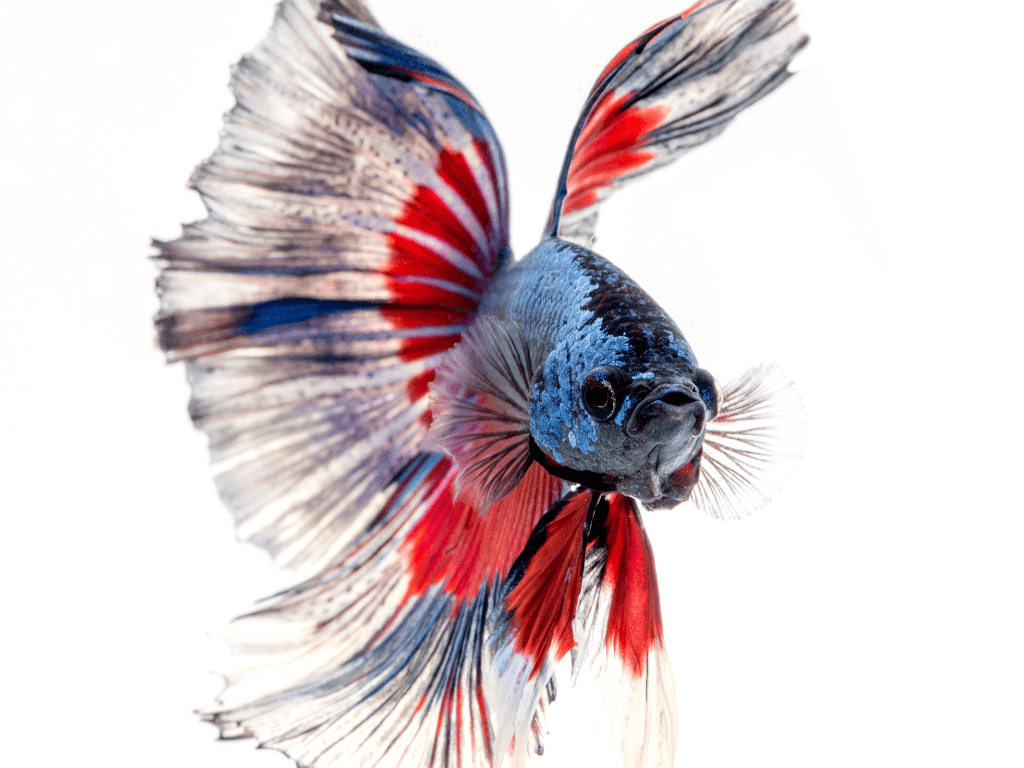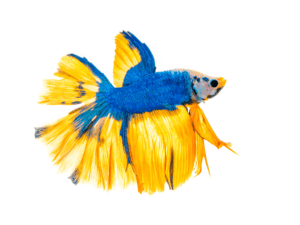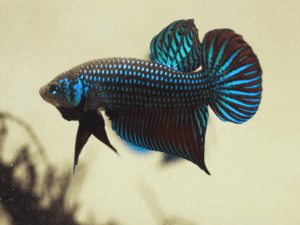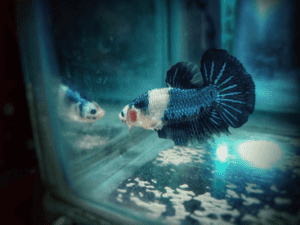Female Betta Fish

Female Betta Fish
Female Betta Fish, also known as Siamese Fighting Fish, is one of the most popular aquarium fish in the world. These stunningly beautiful fish are known for their vivid colors, long flowing fins, and aggressive nature. In this article, we will explore everything you need to know about female Betta fish, including their colors, care, tank setup, characteristics, breeding, and tank mates.
Whether you're a seasoned fishkeeper or a beginner, this article will provide you with all the information you need to successfully care for female Bettas. So, let's dive in and discover the world of female Betta fish!
What Are Female Betta Fish?
Female betta fish, are a popular species among fish enthusiasts. They are known for their vibrant colors and long, flowing fins. Unlike their male counterparts, female betta fish are less aggressive and can be kept together in the same tank without fighting.
They are also great for beginners, as they are easy to care for and can thrive in smaller tanks. Female betta fish are omnivores and should be fed a diet of high-quality pellets and occasional live or frozen foods. Overall, female betta fish make great pets for those looking to add some color and life to their aquarium.
Female Betta Fish Colors
Female betta fish are known for their bright colors and long, wavy fins. These beautiful fish come in a wide variety of colors and patterns, making them a popular choice with fish lovers. In this article, we take a closer look at the different colors and patterns of female betta fish.
Solid colors
Solid-colored female betta fish are some of the more common species. These fish have a single color all over their body, fins, and tail. Some of the more popular solid colors are blue, red, yellow, and green. These colors can vary in intensity, with some fish having brighter, more vibrant hues than others.
Multicolor

The multicolored female betta fish is another popular variety. These fish have two or more colors throughout their bodies and fins. Some of the most popular multicolor combinations are red and blue, yellow and green, purple and pink. These fish can display a variety of patterns including stripes, spots, and mottling.
Pastel
The pastel female betta is a new variety that has grown in popularity in recent years. These fish have a softer and more subdued color palette than other species. Popular pastel colors include pink, lavender, and peach. These fish can have a variety of patterns, including solid, multicolored, and mottled.
Metallic

Metallic-colored female betta fish has a shiny, iridescent finish that adds a unique sparkle to their appearance. These fish come in a variety of colors, including gold, silver, and copper. Some fish may have a mix of metallic colors, like a gold and silver combo. These fish can have a variety of patterns, including solid, multicolor, and marbled.
Black
Black female betta fish is a unique variety that is not as common as some of the other colors. These fish have a solid black color throughout their body and fins. Some black bettas may have a slight iridescent sheen, giving them a subtle shine in certain lighting.
White
White female betta fish are another unique variety that is not as common as some of the other colors. These fish have a solid white color throughout their body and fins. Some white bettas may have a slight iridescent sheen, giving them a subtle shine in certain lighting.
Female Betta Fish Care
Caring for female betta fish is relatively easy, but it's important to provide them with the proper environment and nutrition to thrive. Female bettas can be kept together in the same tank without fighting, but it's important to provide enough space for each fish to have their territory. A tank size of at least 10 gallons is recommended for a group of female bettas.
When it comes to nutrition, female bettas are omnivores and should be fed a varied diet of high-quality pellets and occasional live or frozen foods. It's important not to overfeed your fish, as this can lead to health problems like bloating and swim bladder issues.
In terms of water quality, female bettas prefer a slightly acidic environment with a pH between 6.5 and 7.5. They also prefer a temperature between 75 and 82 degrees Fahrenheit. It's important to regularly test the water in your tank and perform water changes as needed to maintain proper water quality.
Female Betta Fish Characteristics: What You Need To Know
If you're interested in keeping betta fish, it's important to understand the unique characteristics of female bettas. While male bettas are known for their vibrant colors and flowing fins, female bettas have their own unique features that make them just as fascinating.
One of the most notable characteristics of female bettas is their smaller size. While male bettas can grow up to three inches in length, females usually only reach two inches. However, female bettas are just as active and playful as their male counterparts, making them great pets for aquarium enthusiasts.
Another important characteristic of female bettas is their social behavior. Unlike male bettas, females can usually be kept together in groups without any problems. In fact, female bettas often form tight-knit communities and will even help each other care for their young.
Finally, female bettas are also known for their resilience and hardiness. They can tolerate a wide range of water conditions and are generally less prone to disease than male bettas.
In summary, female bettas may not have the flashy looks of their male counterparts, but they have their own unique characteristics that make them just as fascinating and rewarding to keep. If you're considering adding some female bettas to your aquarium, be sure to provide them with a healthy and stimulating environment to thrive in
Female Betta Fish Breeding: Tips and Tricks
Keeping female bettas can be a rewarding and exciting experience for aquarium enthusiasts. However, it is important to understand the process and take the necessary steps to ensure a healthy and successful reproductive cycle.
Above all, it is important to select healthy and compatible breeding pairs. Female bettas should be at least six months old and healthy before breeding. It is also important to consider their temperament and choose pairs that are not aggressive toward each other. After choosing your breeding pair, it is important to create a suitable breeding environment. Females prefer warm, calm waters with plenty of hiding places for their young. You can also provide the female with a spawning ground, such as a clay pot or brood cone, for her to lay her eggs.
During the breeding process, it is important to monitor the behavior of the female and eliminate the fighting male once the eggs have been laid. Female bettas can become aggressive towards males after mating, and staying together can lead to injury or even death. After spawning, it is important to take good care of the young fish. This can include giving them small frequent meals and keeping their water clean and well-oxygenated.
Female Betta Fish Tank Mates

Female betta fish can make great additions to a community aquarium, but it's important to choose the right tank mates to ensure a peaceful and harmonious environment. Here are some tips for choosing the best female betta fish tank mates:
1. Avoid male bettas: While female bettas can usually coexist peacefully with other fish, male bettas are territorial and aggressive. Keeping them in the same tank can lead to fighting and stress for both fish.
2. Choose peaceful fish: Look for peaceful and non-aggressive fish that won't nip at the betta's fins or compete for food. Good options include tetras, guppies, mollies, and corydoras.
3. Consider tank size: Make sure your tank is large enough to accommodate multiple fish without crowding. A general rule of thumb is to have at least one gallon of water per inch of fish.
4. Provide hiding places: Female bettas like to have plenty of hiding places, so make sure to include plenty of plants, caves, and other decorations in the tank.
5. Monitor behavior: Keep an eye on the fish's behavior and remove any that are aggressive or causing problems. You may also want to separate the betta from other fish during feeding to ensure she gets enough food.
In conclusion, female betta fish can make great tank mates in a community aquarium, but it's important to choose the right fish and provide a suitable environment. By following these tips and monitoring the fish's behavior, you can create a peaceful and harmonious community tank that everyone can enjoy.
Conclusion
In conclusion, female betta fish is a fascinating and colorful addition to any aquarium. With their unique personalities and beautiful appearance, they make great pets.
However, it's important to keep together only female bettas or other peaceful fish in their tank to avoid any aggression. By providing them with proper care and a suitable environment, female bettas can thrive and bring joy to their owners for many years to come.

Leave a Reply